The Moravian Music Foundation preserves, shares, and celebrates Moravian musical culture.
Really? Music for harp?
Two years ago I was approached by Jacquelyn Bartlett, Chair of the Harp Department at the University of North Carolina School of the Arts, to alert me that the American Harp Society would hold its Summer Institute in Winston-Salem this summer, and asking if there might be music including harp in Moravian collections. At the time I knew of two Moravian composers who included parts for harp in some of their anthems, but did not know of other works for harp. With the help of Research Librarian Dave Blum, we were able to locate a variety of pieces, many of which will be performed on a concert, Early Music for Harps, Voices, Strings & Organ, presented in partnership with the Moravian Music Foundation, on Tuesday, June 18, at Home Moravian Church, in conjunction with the Society’s meeting. Here you have a few excerpts from the program notes of this concert, to spark your interest in attending if you can …
Five pieces (My Harp Alone, My Favorite Bath Waltz, Hope, Johnny Came A’Courting Me, and Smile Again, My Bonnie Lassie) were found in a single volume, a collection of published sheet music belonging to one Mary Jane Lucas and cataloged as Salem Bound Volume 3. It is one of 33 such volumes in the Winston-Salem holdings of the Moravian Music Foundation, each containing a personal collection of printed music; one might assume the owner chose her favorite music to have bound in a book. These books are bound in leather, often with decorative covers, with the owner’s name on a plate on the front cover. Each book contains two to three dozen pieces, thus giving a remarkable cross-section of the published music known and loved by residents of Salem, North Carolina, in the nineteenth century. Mary Jane Lucas’ volume was given to the Moravian Music Foundation from Mr. and Mrs. Ralph Hanes in 1960, and is perhaps not of Moravian origin.
All five of the pieces from this book were published by G. E. Blake, 13 South 5th Street, Philadelphia, as indeed were the vast majority of pieces in Mary Jane Lucas’ book. George E. Blake (1774-1871) was born in Yorkshire, England, and emigrated to the United States when he was about sixteen. He taught flute and clarinet in Philadelphia, and by 1803 had published his first piece of music. He was one of the music prolific music publishers in the United States, and was one of the first to publish full scores of American musical theater. He also undertook the publication of the complete vocal works of G. F. Handel in piano-vocal scores (fifteen volumes!), and around 1803 he published the first American edition of Handel’s Messiah. He had ceased publishing new music by the 1850s, but continued selling his publications out of his smaller store at 13 South Fifth Street.
The Favorite Bath Waltz, published by Blake as “for the piano forte or harp”, was also printed and sold by John E. Goldberg in Albany. The composer is unknown. The work is through-composed in four short repeated sections.
The music for My Harp Alone was written by British violinist and composer George Kiallmark (1781-1835), who was a member of several notable concert and theater orchestras and also a teacher of harp, violin, and piano. For a number of years he was under contract with two publishers to supply them annually with a set number of new compositions. The words are from the extended narrative poem Rokeby by Walter Scott, which is set during the English Civil War and was published in 1813. Portions of the poem have been the inspiration for over a hundred musical settings, at least two stage versions, at least one painting, and it is thought to be the source of the name of the unincorporated Rokeby, Nebraska.
The composer of Johnny Came A’Courting Me was English oboist and composer William T. Parke (1762-1847), member of a renowned family of musicians. He was highly enough regarded as an oboist that several English theater composers of the day wrote long soprano arias with difficult concertante oboe parts especially for him to play. As a composer, he wrote at least one oboe concerto, two sets of duets for two flutes or oboes, overtures for operas by William Shield, elegies, an Ode to Peace, and over 150 songs. The publication identifies the song as “Sung with the most unbounded applause at the New York Theatre by Mrs. Kollman”, who remains unidentified.
The ballad Smile Again, My Bonnie Lassie was written by Welsh harper John Parry (1710-1782). He was blind, and was taught to play the Welsh triple harp by a relative, and eventually became the most distinguished harper of his generation in Great Britain. Four volumes of his compositions were published during his lifetime, featuring the guitar and the harp. His most important contribution is a publication, with Welsh organist and fellow harper Evan Williams, of a collection entirely of Welsh melodies arranged with bass lines. He later added two more such collections, and these three initiated the fashion of the “harp air”, which became more popular throughout the late 18th and early 19th centuries. The publication identifies the song as a “Ballad sung by Mr. Braham”, probably referring to John Braham (1774-1856), an English tenor opera singer, whose long career led him to be known as one of Europe’s leading opera stars.
Hope is noted on the publication as “sung by Mrs. Thompson in the Grand Spectacle of the Cataract of the Ganges, Composed by Mr. P. Smith”. The Cataract of the Ganges, or The Rajah’s Daughter, is a “grand romantic drama in two acts”, written by W. T. Moncrieff which was premiered at Drury Lane in 1823. The composer P. Smith is unidentified, as is the singer “Mrs. Thompson”.
In addition to these five pieces, Mary Jane’s book contains mostly songs, but also A Favorite Air from Mozart’s Celebrated Opera the Magic Flute Arranged as a Duet for the Piano Forte by T. Latour – something that would indeed be fun to play!
The concert will include two selections from Salem Bound Volume 2, identified on the inside front cover in pencil as “Property of Mr. & Mrs. Barret Taylor, 915 West 4th Street, Winston-Salem, NC”. Now at Moonlight’s Fairy Hour, by Thomas Thompson (b. 1777), is written for two voices with piano or harp. It was published by G. E. Blake, as well as other publishers in New York and Boston.
The Star Spangled Banner is subtitled “A Pariotic Song” – yes, that’s not a typographical error! In fact, that misspelling is the feature of the publication that identifies it as a copy of the first printing of this work. Only ten copies of this first printing are known to exist, held by the Library of Congress; Indiana University, Lilly Library; New York Public Library, Music Division; The Pierpont Morgan Library (James Fuld Collection); Johns Hopkins University Library, Baltimore (Levy Collection); Wesleyan University (Dietrich America Foundation); White House (BMI copy); University of Michigan, Clements Library; Moravian Music Foundation, Winston-Salem, NC; and a private collection (purchased in 2010). In contrast, some 48 copies of the Gutenberg Bible are known to exist.
There are some differences between this very early version and the way we now know the song: some significant variations in the melody; some interesting rhythmic characteristics (notably the short-long rhythms at the end of a few phrases); the repetition of the last two lines of each verse, with the indication that it is to be sung by a chorus the second time; the instrumental introduction and interlude between verses; and especially the presence of four verses.
Also on the concert is the Fantaisie pour Harp & Piano-Forté, sur les Airs de l’opéra: La Gazza ladra, with the harp part found in the Salem Collegium Musicum collection. This copy was published in 1827. The piano part is not found in Moravian Music Foundation collections; but this work has recently been published and was purchased for the concert.
While one does not often think of a harp as having a significant presence in early America, a surprising number of Moravian anthems from the eighteenth and early nineteenth centuries do contain parts for harp, most notably anthems by Johann Christian Geisler and August Heinrich Gehra. Geisler (1729-1815) himself learned to play harp and organ at an early age, and his first wife was also a harpist. While he himself never came to America, most of his known compositions found their way into Moravian collections here.
August Heinrich Gehra (1710-1785) studied organ and oboe, and wrote several anthems that include parts for two harps – including at least two anthems for SSAA choir, a voicing extremely rare in Moravian collections. Gehra’s son Johann Gottlieb (b. ca. 1745) was the founder of the music business Guéra of Lyon, which published a wide repertory for about a dozen years beginning around 1776, including works for harp. Johann Gottlieb was himself an accomplished harpist, pianist, and composer.
The concert featuring these works will be on Tuesday, June 18, 2019, at 7:30 p.m., at Home Moravian Church in Winston-Salem. Admission is free.
Next time: All the ducks in a row?? the making of an organ recording
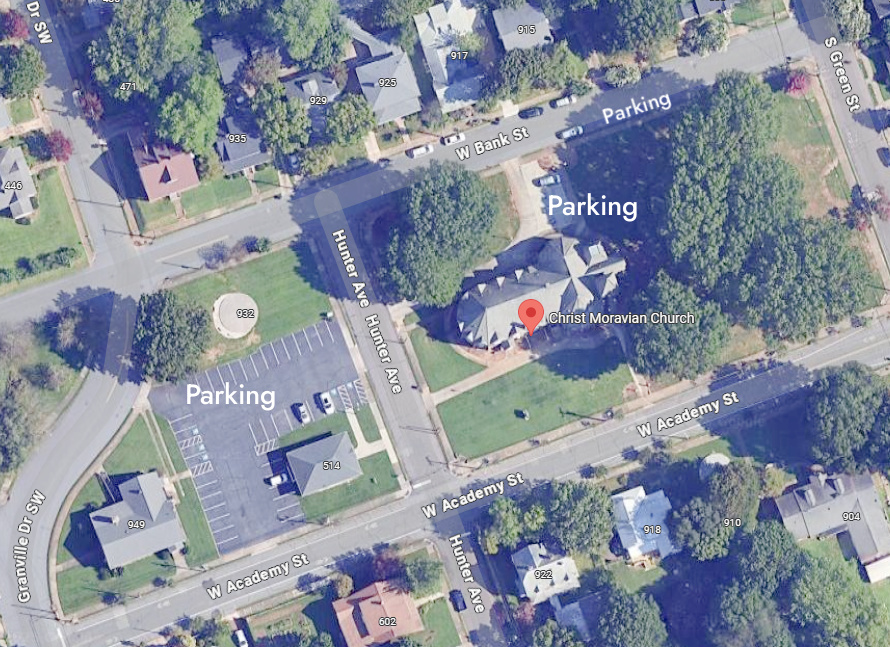
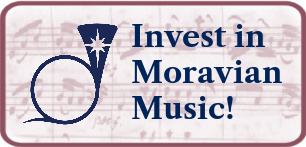

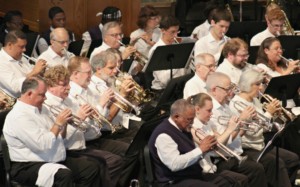
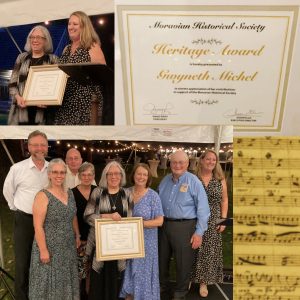
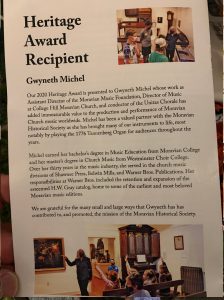
Leave a Reply